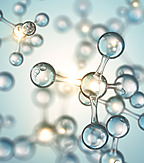article / 13 Nov 2020
The Santen judgment: CJEU denies SPC for further therapeutic application of previously approved active ingredients

After a decade of debate and divergent case law at both national and European level, the question of whether supplementary protection certificates (SPC) should be available for further therapeutic application of previously approved active ingredients may finally have been settled. Setterwalls provides a recap and walkthrough of the Santen judgment (C-673/18) and its implications in the life sciences industry.
The level of attention on the Santen judgement, rendered on 9 July 2020, is understandable. Supplementary Protection Certificates (SPC), introduced to compensate for the loss of effective patent term due to the length of time it takes to obtain marketing authorisation for a drug, can extend the period of patent protection by up to five years. These additional years are important as sales of medicinal products are highest towards the end of the patent term. The SPC regime is of huge economic importance to the innovative pharmaceutical industry, as highlighted during the debate in 2019 preceding the SPC manufacturing waiver (as reported by Setterwalls here and here.
An application for an SPC for a medicinal or veterinary product must fulfil four basic conditions (Art. 3 of the SPC Regulation (EC) No 469/2009, the SPC Regulation):
• The product must be protected by a patent in force.
• The product must not have been subject to a previous SPC.
• The European Medicines Agency (EMA) or a national authority must have granted marketing authorisation (MA) for the product.
• The MA must be the first authorisation to place the product on the market as a medicinal product (the first MA condition).
The changing case law of the first MA condition
The first MA condition had given rise to diverse and arguably contradictory case law from national courts and even the Court of Justice of the European Union (CJEU). When the SPC Regulation came into force, it was commonly interpreted that the first MA condition would exclude SPCs for new therapeutic applications of active ingredients that had previously been granted a MA for other therapeutic applications. Similarly, the CJEU endorsed a restrictive interpretation of the first MA condition in several referrals from national courts. In Pharmacia Italia (C-31/03), MIT (C-431/04) and Yissum (C-202/05), the CJEU rejected SPC applications for new formulation and new therapeutic indications, respectively, of active ingredients subject to previous MAs.
However, in a surprising development, the Neurim judgment in 2012 (C-130/11) raised the possibility of making SPCs available for new therapeutic application of active ingredients subject to previous MAs. In Neurim, the CJEU ruled that a previous MA for a veterinary medicinal product did not preclude an SPC for an MA with the same active ingredient for a different therapeutic application, provided the latter MA was the first MA falling under the scope of the patent subject to the SPC application. Thus, Neurim departed from the previous case law of restrictive, literal interpretation, raising the possibility of further teleological interpretation (i.e. an interpretation emphasizing the aim and purpose of the SPC Regulation, rather than its wording).
Despite the new avenues of interpretation raised by Neurim, the first MA condition was interpreted strictly in the subsequent Abraxis judgment (C-443/17). In Abraxis, the CJEU ruled that the first MA condition was not fulfilled if the SPC application concerned a new formulation of an active ingredient that had been subject to another previous MA for a different formulation. Despite the apparent departure from Neurim’s teleological approach, Abraxis did not qualify, reappraise or even comment on the seemingly contradictory Neurim judgment.
Neurim and Abraxis reinvigorated the debate. Was Neurim the new guiding principle for SPC applications concerning further therapeutic applications and Abraxis the exception? Was Neurim limited to the difference between veterinary use and human use, or was it applicable to MAs for new disease indications, dosage regimes, or means of administration? The SPC case law seemed indecipherable and became a lightning rod for criticism of the alleged unpredictability of the CJEU. In the meantime, Neurim resulted in more grants of SPCs for further therapeutic applications by national patent offices. As late as spring 2020, the Swedish patent and market courts rendered both judgments upholding decisions to grant SPCs on the basis of the Neurim reasoning, as well as judgments rejecting SPCs on the basis of the Abraxis reasoning.
The Santen judgment
In the Santen judgment of 9 July 2020 (C-673/18), the CJEU Grand Chamber concluded that the first MA condition must be interpreted as meaning that an MA cannot be considered the first MA if it covers a new therapeutic application of an active ingredient that has already been the subject of a previous MA for a different therapeutic application.
The facts underlying the case concerned a French SPC application filed by French pharmaceutical laboratory Santen. Santen had obtained an MA from the EMA for the product Ikervis, an eye drop emulsion comprising the active ingredient ciclosporin for the treatment of dry eye disease. The product was protected by a European patent held by Santen. Santen filed an SPC application based on the MA and the patent.
The Director-General of the French authority for intellectual property (Institut National de la Propriété Industrielle, INPI) rejected Santen’s French SPC application, arguing that it did not comply with the first MA condition. A MA had already been granted in 1983 for a medicinal product containing ciclosporin as an active ingredient, a product named Sandimmun, for several therapeutic applications, including treatment of inflammation of the middle part of the eyeball. The Sandimmun MA differed in several respects from the Ikervis MA, including different disease indications, formulations and method of administration.
Santen brought an action against the INPI decision before the Paris Court of Appeal, arguing that the SPC application fulfilled the first MA condition since the Ikervis MA concerned a different application from the previous Sandimmun MA, i.e. in line with Neurim. The Paris Court of Appeal stayed the proceedings and referred several specific questions to the CJEU regarding the scope and conditions for applying the different application condition under Neurim.
In its judgment, the CJEU went straight to the crux of the matter by noting that all questions referred to were based on a premise that a MA covering a new therapeutic application of an active ingredient may be considered the first MA, even if the active ingredient has already been the subject of a previous MA for a different therapeutic application.
In reviewing whether that premise was correct, the CJEU endorsed a literal, restrictive interpretation of the SPC Regulation. The term product was clearly defined as the active ingredient of a medicinal product, i.e. independently of its therapeutic application. Consequently, a MA for a new therapeutic application of an active ingredient subject to another previous MA could not be considered a new product under the SPC Regulation. This interpretation was further in line with the protection conferred by an SPC, which is not dependent on or limited to specific uses or application but instead covers any use of the active ingredient as a medicinal product (Art. 4 of the SPC Regulation). This literal, restrictive interpretation was further supported by the preparatory works behind the creation of the first SPC Regulation (Regulation No 1768/92). In the view of the CJEU, allowing SPCs for active ingredients despite previous MAs for different therapeutic applications would undermine the fundamental objectives of the SPC Regulation.
Based on these reasons, the CJEU concluded that the first MA condition means the first MA for a medicinal product incorporating the relevant active ingredient, regardless of its therapeutic application. The intended use of an active ingredient is not a decisive factor for granting a SPC. The CJEU also justified its conclusion from a teleological perspective; the EU legislature’s intention in establishing the SPC regime was not to protect all pharmaceutical research leading to a patent and a MA for a new medicinal product, but rather to protect research leading to the first placing on the market of an active ingredient as a medicinal product. By its very reasoning, Santen overturns the Neurim judgment.
As if the above were not clear enough, the CJEU took the unusual step of explicitly stating that its conclusion was “contrary to what the Court held in paragraph 27 of the judgment in Neurim”. Thus, the reasoning in Neurim – that the first MA condition refers to the first MA within the scope of protection conferred by the basic patent of the SPC application – was rejected.
Impact on the life sciences industry
The impact of Santen cannot be understated, and it does not seem to leave any wiggle room from precluding SPCs for further therapeutic applications of previously approved active ingredients. It will most likely lead to refusals of many SPC applications for further therapeutic applications. There is a clear risk of revocation for SPCs currently approved on the basis of Neurim. Innovative life science operators must consider Santen and adapt its SPC filing strategies accordingly.
While the Santen judgment is expected to provide substantial consistency compared with the infamously complex previous case law, it has undoubtedly delivered a blow to the financial incentives of research and development in further medical uses of previously known drugs. It is expected to further earlier market access for the generic industry and reduce costs for public health systems.


